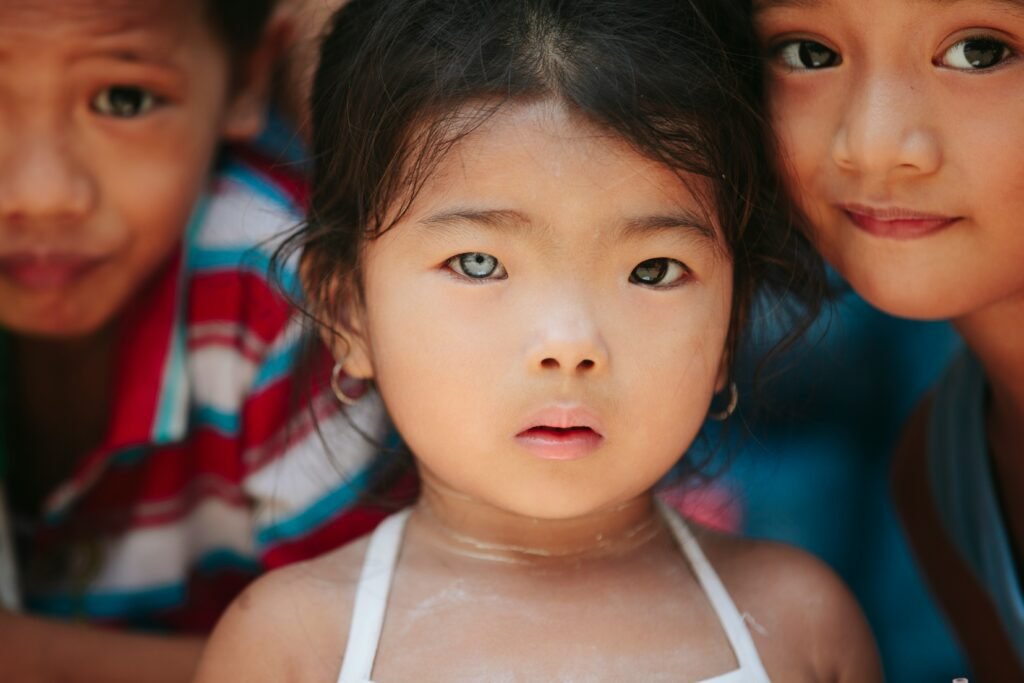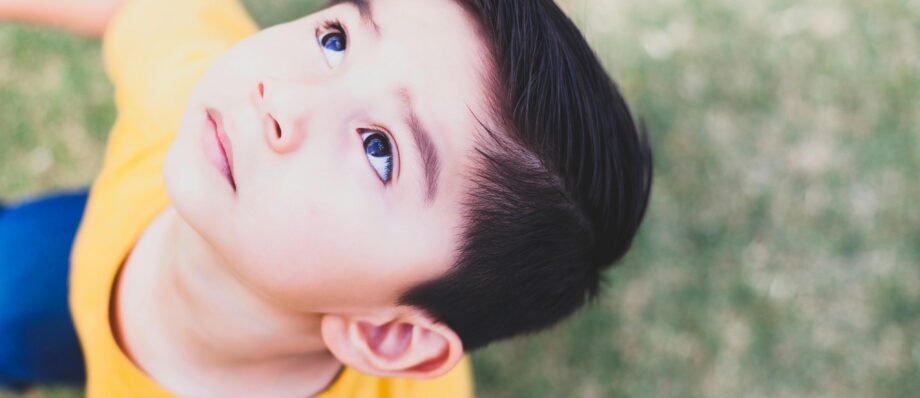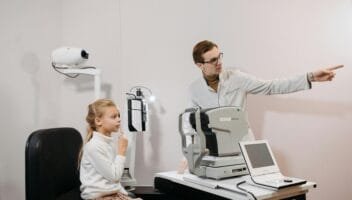Discover how early detection of vision problems can significantly impact a child’s mental health, academic performance, and overall well-being. Learn about common signs, prevention, and the importance of regular eye exams.
Early Detection of Vision Problems: Leading to a Brighter Future
Picture a world in which your child enjoys perfect vision, easy access to books, sports, and social activities. The early detection of eye problems makes life more bearable by preventing long-term issues and ensures a better future for your kid.

Children may suffer from eye problems that go beyond their typical vision. This can have serious repercussions on their development and well-being, including nearsightedness, (Myopia), farsightedness (Hyperopia), dryness or severe illnesses like amblyopia and strabismus. Early detection of vision problems can make their lives easier and ensure a healthier future.
Vision problems can have a tremendous effect on one’s life and they need to be detected early,
- Improved academic performance has been associated with clear vision in children and higher school grades.
- Poor eyesight can cause isolation and poor confidence among children, so early detection and treatment can assist children in building social skills and forming meaningful relationships.
- Untreated, vision problems may progress to more serious forms such as amblyopia or strabismus – early detection and treatment could prevent future complications like these from appearing.
This article’s primary focus is the early diagnosis and treatment of vision issues in children, which can have serious negative repercussions for their mental health and future prospects.
The Impact of Vision Problems on Children’s Mental Health
The Psychological Toll of Vision Impairment
Imagine struggling to read the board in class or playing sports and not being able to see the ball, such challenges could have an enormous effect on a child’s mental health. Vision issues may lead to decreased confidence at school or social events, furthermore, strain and irritation caused by vision problems can contribute to feelings of anxiety and stress; isolation among children can result in feelings of sadness and hopelessness.

The Link to Academic Struggles
Learning and academic performance of children with vision impairments are directly affected by vision problems.
- Problems in reading may develop due to visual impairment.
- Handwriting that is untidy or illegible leads to frustration and lower self-esteem
- It may give rise to issues in class activities where vision problems interfere with seeing the board, following demonstrations or doing group works.
Academic difficulties may cause children to feel like failures and hinder their advancement.
Social Isolation and Peer Rejection
Vision problems can have a major effect on children’s social lives. Secular impairment makes it harder for children to participate in activities with their peers, leading them down a path of loneliness and social isolation that may eventually result in decreased self-esteem and feelings of resentment.
Children with visual impairments may be subjected to bullying and ridicule by other children, which can lead to mental health issues as well as increased social isolation.
Common Childhood Vision Problems
Refractive Errors
Children often struggle with vision issues due to refractive errors. These arise when their eye’s structure prevents light from reaching the retina. Myopia affects nearsightedness while hyperopia results in farsightedness causing impaired visual sensitivity. Furthermore, astigmatism’s irregular shape results in blurred vision at all distances.
Refractive errors can be treated using glasses, contact lenses or surgery. Early detection of vision problems followed by diagnosis and treatment can prevent vision problems from worsening while improving quality of life for children.
Amblyopia (Lazy Eye)
Lazy eyes or amblyopia is caused when one eye fails to use its full potential due to improper usage, often as the result of visual acuity problems or crossed eyes (strabismus).
To prevent permanent amblyopia, early recognition and treatment are critical. Treatment typically entails patching the stronger eye to force weaker ones to work harder while in certain circumstances glasses or vision correction may also be needed.
Strabismus (Cross-Eyes)
Strabismus, which refers to any misalignment between the eyes, can result in double or blurred vision and can sometimes even double back on itself. There are various types of strabismus; examples are:
- Esotropia wherein both eyes move inward.
- Exotropia involves outward turning of one eye
- Hypertropia or Hypotonia occurs when one eye looks upward or downward, respectively.
Treating strabismus often requires glasses, prisms or surgery; early diagnosis and treatment can help avoid vision problems while simultaneously improving a child’s appearance and self-esteem.

Signs and Symptoms of Vision Problems in Children
For early detection of vision problems, it is important to monitor the physical and behavioral changes in your child.
Behavioral Indicators
In addition to physical symptoms, Children with vision difficulties often exhibit behaviors which demonstrate their condition. Some of the more typical signs include:
- Squinting- is a popular technique among children to focus their attention on an object.
- Repetitively rubbing the eyes- could be an indicator of irritation or eye strain.
- Nearsightedness- can be detected by holding objects near the face and keeping a watchful eye.
- Avoiding Reading or Visual Tasks: Children can quickly exhaust themselves if required to participate in activities requiring good eyesight.
- Eye strain may lead to headaches or fatigue.
Physical Symptoms
Physical symptoms to look for in your little ones include:
- Red and watery eyes may indicate allergies or eye strain.
- When bright lights can be the source of pain and discomfort for children, it can mean eye trouble.
- Difficulty in seeing in low light can indicate nearsightedness or other vision-related problems that need further investigation.
Be mindful that these symptoms can often go undetected. If you suspect your child cannot see properly, it is advised that they visit a pediatric ophthalmologist immediately.
The Importance of Regular Eye Exams in the Early Detection of Eye Problems
Early Detection of Vision Problems and their Prevention
Getting your children regular eye examinations is of vital importance in order to safeguard their vision. Regular check-ups allow doctors to detect potential issues early and provide recommendations for treating any future problems that might arise, helping reduce more serious health concerns in your child and making their life better overall. Pediatric ophthalmologists conduct detailed examinations designed to detect nearsightedness, farsightedness, astigmatism, amblyopia, strabismus and other common eye conditions among kids; examination frequency should depend on age and risk factors of your child – typically given during early years when first seen for examination at birth or shortly after that time.
The Role of Pediatric Ophthalmologists
Pediatric ophthalmologists specialize in the care of children’s eyes. A variety of eye disorders in children can easily be diagnosed and treated by them.
- Pediatric ophthalmologists specialize in providing personalized vision care to children.
- Early detection of vision problems allows for more efficient treatments;
- Personalized attention: pediatric ophthalmologists offer tailor-made treatments for your child.
Also, preschoolers can benefit from eye exams to keep them healthy and alert.
Resources and Support
Finding a Pediatric Ophthalmologist
Since your child’s wellbeing and safety is important, it is crucial that they consult with an experienced pediatric ophthalmologist. Therefore, for reliable referrals, speak to their pediatrician, friends or family; before checking credentials. Also, make sure your insurance covers it as well; check if there is coverage and assess their reputation through online reviews of different platforms.
Vision Therapy and Corrective Lenses
Vision therapy and corrective lenses provided through their regular eye care services may prove invaluable to children. Therefore, corrective lenses help correct any refractive errors using contact lenses or glasses as appropriate.
Advocacy and Support Groups to cater to Vision Problems
Parents and siblings of those living with vision impairments have numerous resources and support groups available to them not only for guidance, but also for information, support, and advocacy services.

The Impact of Vision Problems on Children’s Development
Cognitive Development
Vision issues can have a devastating impact on a child’s cognitive development. When children struggle to see clearly, this can inhibit their learning capabilities and cause delays in language acquisition, reading proficiency and writing capabilities. As a result, early detection of vision problems is absolutely essential.
Motor Development
Vision plays an integral role in motor development for children. Children who experience vision problems may struggle performing tasks requiring hand-eye coordination such as catching a ball, writing or using utensils – this may hinder both their physical growth and sense of wellbeing
Emotional Development
Vision issues can have an adverse impact on children’s emotional development. Thus, struggling to see clearly can cause feelings of frustration, anxiety and low self-esteem that present challenges for relationships among classmates and family members alike.
How Parents Can Play their Part in Early Detection of Vision Problems
Early identification and assessment of vision problems by parents and caregivers are critical in order for a child to seek assistance as soon as possible.
Establishing an Inclusive Environment
Parents can foster their child’s inclusive environment by providing necessary accommodations and resources, such as assistive technology, adaptive toys, teacher support or help from classmates and classmates.
Parents Should Promote Regular Eye Exams
In order to safeguard their child’s vision health, it’s essential that eye exams become part of routine healthcare services and encourage regular exams so as not to worsen existing vision issues over time. Thus, by scheduling regular exams for their kids, parents can help stop vision problems from occurring or worsening over time.
The Future of Vision Care for Children
Technology Advances
Recent technological innovations are revolutionizing how eye issues in children are identified and treated. Retinal imaging and laser surgery allow doctors to quickly spot vision disorders before treating them more successfully than ever.
Awareness and Prevention of Vision Problems
Raising public understanding about early diagnosis is critical to improving children’s lives. Therefore, by spreading this message and supporting preventive measures we can ensure that more children gain access to necessary care needed for growth and survival.

Conclusion
Children’s mental health, academic success and overall well-being are directly tied to early detection vision problems. Thus, to ensure that your children’s eye health remains optimal, it is vital that regular eye exams be scheduled.
- Early detection of vision problems is vital in order to avoiding future complications, and may prevent low self-esteem, anxiety and depression as well as costly eye surgeries in the future.
- Maintaining regular eye checks is vital. Therefore, consult a pediatric ophthalmologist every six months and utilize resources and support groups dedicated to serving families of visually impaired children for the early detection of vision problems.
As soon as your child’s vision health becomes a priority, they will enjoy more fulfilling lives thanks to improved eyesight.
FAQ Section
How often should my child have eye exams?
Your child should begin receiving regular eye examinations beginning with birth and continuing throughout their lives. Annual exams should then follow.
What are the signs of vision problems in a newborn?
Warning signs can include crossed or wandering eyes, excessive head tilting or light sensitivity.
Are vision problems likely to influence my child’s behavior?
Yes, vision problems can lead to behavioral problems in children such as aggression, frustration or withdrawal.
Are vision problems hereditary?
In some instances, yes. Family history increases the risk of certain vision conditions.
Can vision problems be corrected?
Many vision problems can be corrected using glasses, contact lenses or vision therapy.



